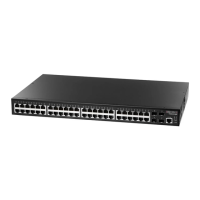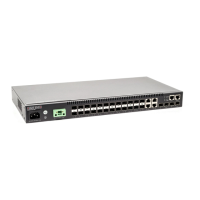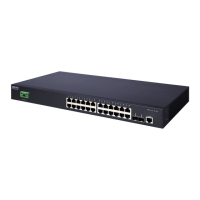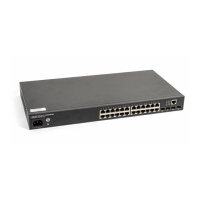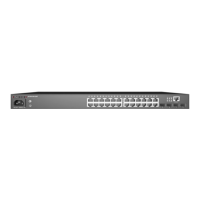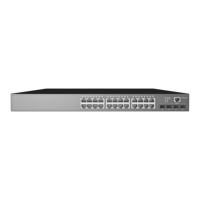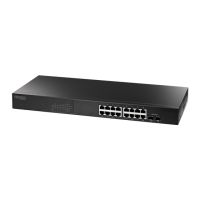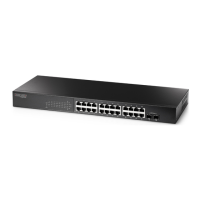– 30 –
6 Port Connections
This chapter includes these sections:
◆ “Cable Labeling and Connection Records” on page 30
◆ “Copper Cabling Guidelines” on page 31
◆ “Power-over-Ethernet Guidelines” on page 33
◆ “Fiber Cabling Guidelines” on page 34
◆ “How to Connect to Twisted-Pair Copper Ports” on page 35
◆ “How to Connect to SFP Fiber Optic Ports” on page 36
Cable Labeling and Connection Records
When planning a network installation, it is essential to label the opposing ends of
cables and to record where each cable is connected. Doing so will enable you to
easily locate inter-connected devices, isolate faults and change your topology
without need for unnecessary time consumption.
To best manage the physical implementations of your network, follow these
guidelines:
◆ Clearly label the opposing ends of each cable.
◆ Using your building’s floor plans, draw a map of the location of all network-
connected equipment. For each piece of equipment, identify the devices to
which it is connected.
◆ Note the length of each cable and the maximum cable length supported by the
switch ports.
◆ For ease of understanding, use a location-based key when assigning prefixes to
your cable labeling.
◆ Use sequential numbers for cables that originate from the same equipment.
◆ Differentiate between racks by naming accordingly.
◆ Label each separate piece of equipment.

